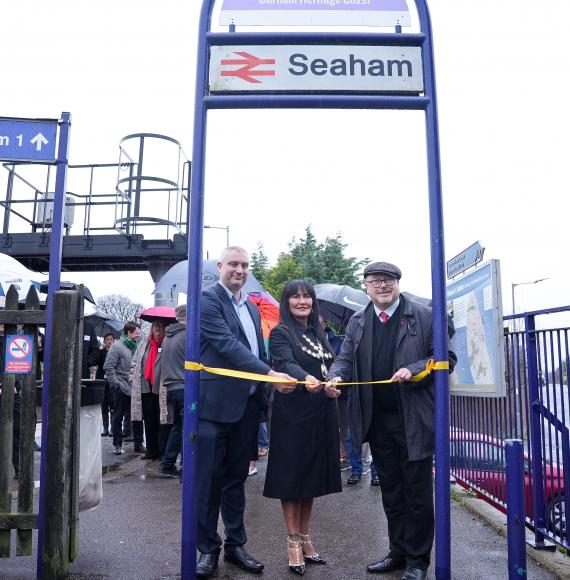The future opportunities to expand the railway network in Oxfordshire have been outlined in a new study, alongside the business case for investing in the work - with a suggestion that it would help deliver significant regional economic growth.
The Oxfordshire Rail Corridor Study (ORCS) provides a detailed investigation into the predicted job and housing growth in the county over the next two decades, and presents an industry vision for how the rail network can best embed itself into and support that growth.
ORCS was commissioned and joint-funded by the Department for Transport and the Oxfordshire Growth Board.
Network Rail produced the study, with oversight from the Oxfordshire Growth Board, in collaboration with industry partners and local authorities, to help develop an overarching strategy for rail development.
A number of future improvements to the rail network are put forward in the study to support increased interconnectivity across Oxfordshire.
Subject to funding and viable business cases, these could include the increasing of capacity through Oxford station, the reopening of the Cowley branch line, plus additional services to Hanborough, as well as additional infrastructure to provide added capacity in and around Didcot.
The last of these would also include the proposal for a new station at Wantage/Grove, subject to additional main line infrastructure.
Within the report, Network Rail and partners have identified the particular areas of Oxfordshire’s rail network expected to see the highest growth in demand for services in the medium (by 2028) and long-term (by 2023). These include improving connections between Oxfordshire’s seven growth hubs, as well as improving the city’s connections with Birmingham, Reading and Bristol.
Part of this was calculated alongside a predicted 70% increase in services across Oxfordshire, calculated pre-pandemic, with this surge in demand expected to return in the coming years, as passenger numbers rebuild and grow. As such, the study’s recommendations are being viewed as critical to supporting this anticipated regional growth.
The study also identifies the need to increase capacity at Oxford station as a vital first step to opening up the rail network for further growth.
The Department for Transport last month confirmed £69m funding for the next stage of the Oxford Corridor Capacity Phase 2 project, with the latest investment allowing for increased capacity and improved journey times on the key route.
The recommendations have been drawn together to form an overarching industry strategy for the county, titled ‘Oxfordshire Connect’, which will be used to decide future investment priorities and help seek future funding through the Government’s Rail Network Enhancements Pipeline (RNEP) and third parties.
Work is already underway on some of the priority projects that have been identified, with the aim of progressing them to the next stage of business case development.
Mike Gallop, Network Rail's Wales and Western Interim Managing Director, said: “Oxfordshire plays a central role in the national rail network, linking the south to the midlands for the movement of passengers and freight. This vital study maps out the county’s future to ensure the railway keeps pace with the expected growth and continues to deliver for the communities it serves.”
Rail Minister Chris Heaton-Harris added: “This is an important study for mapping out the future needs of Oxfordshire’s rail network as we build back better after Covid-19.
“As new jobs are created and new houses are built, and with its central location in our nation’s rail freight lines, Oxfordshire’s railways will continue to play a key role in the wider network.
“Modernising and upgrading our vital transport links is critical to unleashing our economy and spreading opportunity.”

















